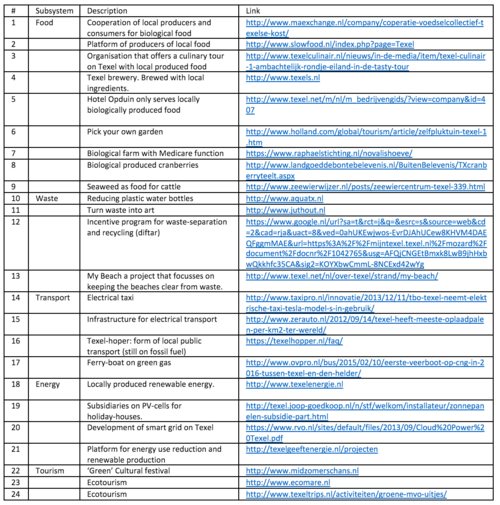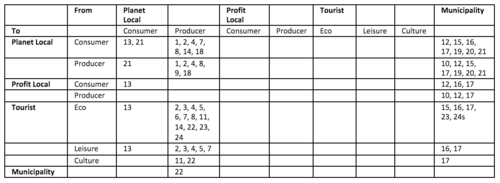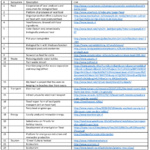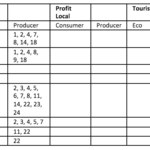For example everyone in Texel needs food, transport and energy to live their life and everyone produces waste. Tourism is of course mostly relevant for the lifestyle group Tourist, however since the tourist industry is large on Texel this also relates to the lifestyle of the Profit/Planet-Local groups. For each subsystem the presence of projects or platforms on Texel is analysed using websites as the main source. The findings of this analysis are given in the following table (click on the table on bottom of the page to enlarge it).
Analysing this table, it is noticed that the sub-systems with the most projects are food and energy. Presence on the internet about the sub-system tourism, transport and waste was much less. Hence it is concluded that the main trend with regard to sustainability on Texel is to focus on the (local) production and consumption of food and energy.
In the next table these initiatives are assigned to the (relations between) the different lifestyles on Texel. In this way one can see which lifestyles are more closely related regarding sustainable initiatives and which are less related. Because it is only focussed on sustainable projects and initiatives no numbers are shown in the columns of the Profit-Local and Tourist. (click on the table on bottom of the page to enlarge it)
From the latter table one see that the main initiators of sustainable projects are the Planet-Local-Producer and the Municipality.
Conclusion
Combining these two tables it is concluded that currently the most initiatives are conducted by the Planet-Local-Producers and the Municipality and that their focus is mainly on making the food-system and the energy-system more sustainable. This also implies that there are gaps in the sub-systems waste, transport and tourism. These gaps could become opportunities if it is aimed to pinpoint on the change levers on the subsystem lifestyle on Texel.





